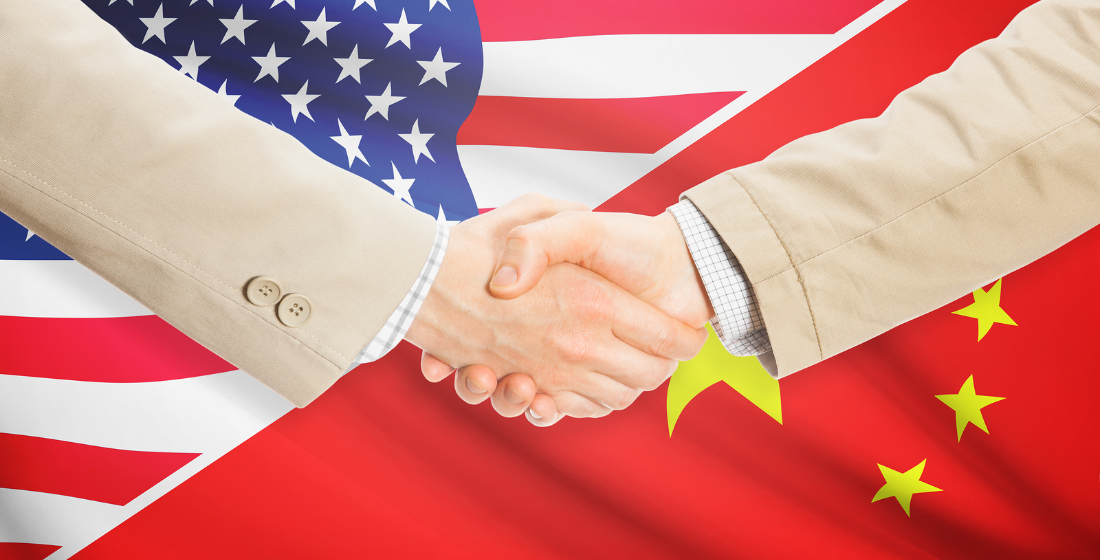Expert briefing: Has the US-China trade war found peace?
James Burgess, head of commercial for London and UK South East region at Atradius takes a look at the latest developments in the tit-for-tat US-China trade war, and asks whether 2020 will mark the end of trade war fears?

Still just a few months old, 2020 has already been witness to significant milestones in the global economic arena. While Europe has seen the UK confirm its exit from the EU, across the globe the US and China appear to have found a new peace in their trade conflict. The tit-for-tat trade war has been rumbling since 2018, with retaliatory tariffs between the two heavyweight nations imposed upon hundreds of billions of dollars’ worth of tradeable goods. The ensuing fallout has had implications on a global scale. The big question now is whether 2020 will see the end of trade war fears.
The story so far
US President Donald Trump introduced tariffs on steel and aluminium back in April 2018. China reacted by imposing tariffs on 128 US products. What followed were several rounds of punitive trade measures between the two countries, with the US pushing an agenda to protect home grown products while accusing China of unfair trading practices. The resulting embroilment has seen the US impose tariffs on $550bn worth of Chinese products with reciprocal tariffs by China imposed on $185bn of US goods. By the end of 2019, 96.8% of imports from China into the US were subject to tariffs whilst tariffs cover from China affected more than two-thirds of all imports from the US. Tariff levels on both sides have risen by more than 50% since the start of the trade war.
The fallout for the players; the US and China
The impact of the trade war can easily be seen in macroeconomic indicators. Since the trade war started, GDP growth has slowed in both the US and China; dropping to 2.1% in the US and 6.2% in China, a 27-year low. Tariffs have hurt business bottom lines and raised prices for consumers. Meanwhile, bilateral trade flows have contracted sharply with varying degrees of impact as the trade war took hold. In just one quarter last year, Chinese imports from the US decreased 30% year on year, while Chinese exports to the US declined 9%. But the headline numbers don’t always tell the full story. Strong underlying US import growth masks the export decline of Chinese sectors affected by the tariffs; without these tariffs, Chinese exports to the US could have increased up to 10% instead of declining. Meanwhile, at a sector level the impact is variable, for example, around a third of US exports to China are farm products and raw materials, which are price sensitive and relatively easy to replace with other products. In contrast, most Chinese exports to the US are manufactured goods which are more differentiated and where China often has high market shares. So while it may be easier for China to substitute US agricultural imports, the US faces a costlier, time-consuming shift to other suppliers. That said, China’s exports are likely to become more strained over time as supply chains adjust and the US finds other suppliers.
The global fallout
The impact of the trade war has not been limited to the two sparring countries, rather, the collateral damage has been felt across global economy. Global GDP growth is forecast to have expanded by only 2.5% in 2019, a remarkable slowdown from the 3.2% predicted in 2018; moreover, growth is expected to remain weak at 2.5% this year. The world trade slowdown is the key factor behind the deceleration but it has certainly worsened as a result of the US-China conflict. The trade war escalation created heightened uncertainty around economic policy, weighing heavily on already declining business confidence and subsequently depressing investment. Meanwhile, global manufacturing indicators moved into negative territory and services indicators put under pressure. The impact is also visible when you review global trade growth, which stagnated as we moved into 2019 and felt the headwinds of the trade war escalation, leading to the weakest quarter for world trade growth since the height of the financial crisis in 2009. A year on, global trade has not recovered as the trade war impacts continued to take a toll, contracting by an estimated 0.6% for 2019 and only forecast to grow 1.5% in 2020.
The new agreement
In January, the US and China signed an agreement to pause the trade war. The ‘phase one’ pact has seen China pledging to increase US imports by $200bn above 2017 levels – boosting agriculture, manufacturing, energy and services – as well as strengthening intellectual property rights. By return, the US has agreed to halve some of the imposed tariffs on Chinese imports. However, while the deal seems to remove the threat of further escalation, most of the existing duties on both sides remain in place.
On the horizon
The reduced threat of further trade war escalation should decrease policy uncertainty and provide relief for the global economy. However, in a climate of constant change nothing is certain. Previous peace accords in the history of the dispute have been short lived with news of agreement often followed by renewed escalation in the ‘war’. Meanwhile, the majority of the tariffs established during the trade war still stand and their impact therefore sustained. Businesses will continue to face higher costs, trade relationships will continue to shift and global trade growth will continue to adjust. In the midst of this, a degree of uncertainty will inevitably prevail. More positively, the second phase of talks will include a review these existing tariffs but with no timeline set for conclusion of the talks the impacts of the tariffs continue to be felt.
The underlying tensions between US & China extend beyond trade and tariffs. There are ideological differences such as intellectual property protection, the non-level playing field for direct investments and several aspects related to China’s role in the world economy. The layers are complex and the next phase of any agreement likely to be more protracted. Significant de-escalation and a comprehensive trade deal is not yet in reach so while the latest agreement remains on the table, the risk of future trade war proliferation has not yet been extinguished.
Protecting your business
Uncertainty has become one of the most used words in the economic lexicon, and when it comes to trade risk, uncertainty has become the norm. However, businesses cannot let uncertainty stifle opportunity for growth, picking the right deal will still deliver rewards. The global economy is host to as many vulnerabilities and risks as there are opportunities, each with the potential to affect your business and its trading relationships directly or indirectly. Proactively protecting your business from such risk sounds obvious, but too often companies overlook the basics. Trade credit insurance is an indispensable tool, providing access to reliable information with insights and analysis of your market and individual customer payment behaviours. Atradius enjoys a world-wide presence with our experts on the ground in more than 50 countries, our vast data source enables insured customers to trade with confidence. The forecast for the trading landscape may be unsettled, but with the right protection, your business can weather the storm.




